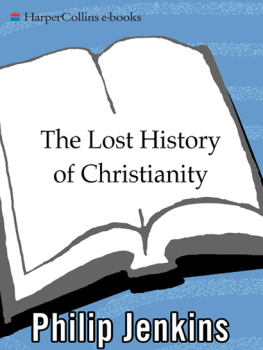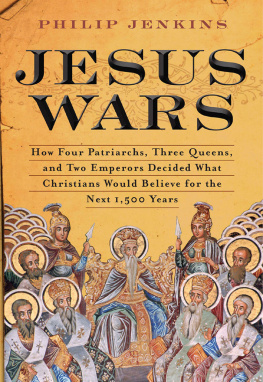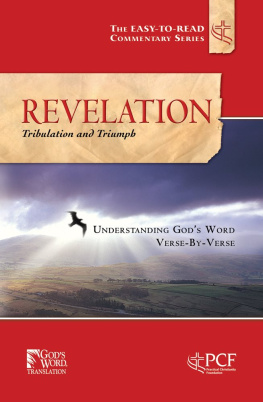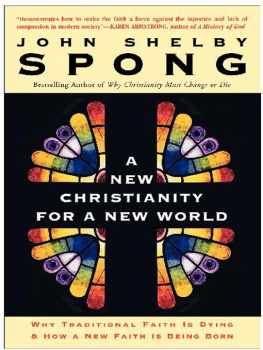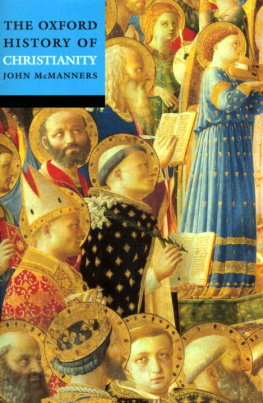The Thousand-Year Golden Age of the Church in the Middle East, Africa, and Asiaand How It Died
Throughout this book, I refer to the Eastern Christian churches that are commonly known as Jacobite and Nestorian. Both names raise problems, and some historical explanation is useful at the outset. At the risk of ignoring subtle theological distinctions, though, a reader would not go far wrong by understanding both terms as meaning simply ancient Christian denominations mainly active outside Europe.
Christianity originated in the Near East, and during the first few centuries it had its greatest centers, its most prestigious churches and monasteries, in Syria, Palestine, and Mesopotamia. Early Eastern Christians wrote and thought in Syriac, a language closely related to the Aramaic of Jesus and his apostles. These churches became involved in passionate debates that divided Christians into several leading schools or factions, which often fought each other with distinctly un-Christian violence. One great divide happened in the fourth century, when the Council of Nicea (325) reasserted the doctrine of Christs divinity. But over the coming decades, the mainstream Christians who accepted that doctrine were divided over additional issues, especially concerning the Person of Christ. Yes, Christ was in some sense both human and divine, but what was the exact relationship between the two elements? How could someone say that Jesus was both man and God?
According to the Catholic or Orthodox, who eventually triumphed within the Roman Empire, Christ had two natures, which were conjoined and commingled. Many Easterners followed the Patriarch Nestorius, who accepted the two natures but held that these were not absolutely united in the mystical sense taught by the Orthodox. This meant that the Virgin Mary could not rightly be called the Mother of God. Following bitter struggles, these Nestorians were cast out of the fold at Ephesus in 431. Most Egyptians and Easterners, however, held that Christ had only one nature, so that the divine overwhelmed the human. They thus became known as Monophysites, believers in one nature. In 451, the ecumenical council at Chalcedon defeated the Monophysites and declared them heretical. I am oversimplifying the differences between the various teachings, which in fact were much less stark than is suggested here: modern historians stress that the different schools had much more in common than their enemies suggested.
The Council of Chalcedon left the Orthodox in command of the empire and the mainstream church apparatus, and over the next two centuries they excluded and persecuted the newly defined heretics, although these probably formed majorities in many of the empires eastern regions. In Egypt and Syria, Monophysites were so commonplace that they were known simply as Egyptians (Copts) and Syrians ( Suriani ), respectively. In the sixth century, a Syrian leader named Jacobus Baradaeus organized the Monophysites into an underground parallel church that became known as the Jacobites. By the time of the Arab conquests in the seventh century, the Jacobites probably held the loyalty of most Christians in greater Syria, while the Nestorians dominated the eastern lands, in what we now call Iraq and Iran. The West Syrian church was Jacobite; East Syrians were Nestorian.
Using these sectarian labels is misleading if it paints these churches as anything less than authentically Christian. Not surprisingly, modern adherents resent the names, just as much as a Roman Catholic would hate to be described as a papist or a Romanist. Jacobite was a dismissive name devised by their foes; while to themselves, the Nestorians were simply, and properly, the Church of the East. Both faithfully accepted the Council of Nicea, both clung to a faith that had been handed down to them from the apostles via the Great Church, and indeed both had an even more conservative approach to the canon of scripture than did the European-based churches. Around 800, the great Nestorian patriarch Timothy listed the fundamental doctrines that were shared by all the different groupsNestorian, Monophysite, and Orthodox: all shared a faith in the Trinity, the Incarnation, baptism, adoration of the Cross, the holy Eucharist, the two Testaments; all believed in the resurrection of the dead, eternal life, the return of Christ in glory, and the last judgment. We must never think of these churches as fringe sects rather than the Christian mainstream in large portions of the world. Among African and Asian Christians, these two strands of Christianity would certainly have outnumbered the Orthodox.
Having said this, the bodies in question are so central to the story that they must be described somehow, even if the terms used were originally negative. Any history of Christianity that fails to pay due attention to these Jacobites and Nestorians is missing a very large part of the story. Nor are the official names used by the heirs of these churches themselves any less controversial. Technically, the modern heirs to the Jacobites are Syrian Orthodox, which is confusing if we apply the Orthodox name retroactively to medieval conditions. The Nestorian church evolved into the Assyrian Church of the East, with a questionable emphasis on the Assyrian racial heritage. Some scholars prefer West Syrian for Jacobite and East Syrian for Nestorian, but neither term has entered common usage. While recognizing the limitations, then, I will use the older labels.
Other issues arise with names drawn from African and Asian languages, which are transliterated in various ways. The Mongol ruler whom I call Hulegu has in various sources been referred to as Hulagu, Holaaku, and Hlg, while Genghis Khan is more correctly called Chinggis. Older sources refer to the Uygur people as Uighurs, and to the Ongguds as Onguts. I have tried to achieve consistency, but in doing so I may not always have fulfilled the most precise linguistic standards, which change quite rapidly.
The End of Global Christianity
Religions die when they are proved to be true. Science is the record of dead religions.
Oscar Wilde
Religions die. Over the course of history, some religions vanish altogether, while others are reduced from great world faiths to a handful of adherents. Manichaeanism, a religion that once claimed adherents from France to China, no longer exists in any organized or functional form; nor do the faiths that dominated Mexico and Central America half a millennium ago. In some cases, religions may survive in some parts of the world but are extinguished in territories that they once regarded as entirely their own. For a thousand years, India was mainly Buddhist, a faith that now enjoys only marginal status in that land. Once Persia was Zoroastrian; most of Spain, Muslim. It is not difficult to find countries or even continents, once viewed as natural homelands of a particular faith, where that creed is now extinct, and such disasters are not confined to primal or primitive beliefs. The systems that we think of as great world religions are as vulnerable to destruction as was the faith of the Aztecs or Mayans in their particular gods.

